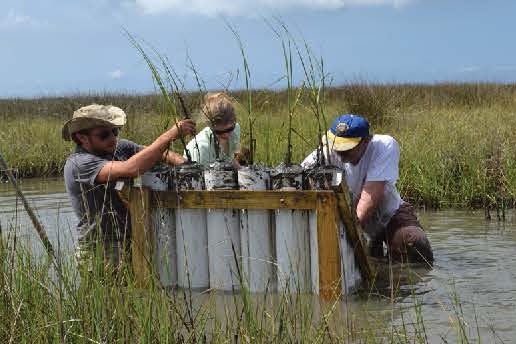Ocean levels have been rising for the past century, scientists say, creating a situation that could negatively affect many coastal animals and plants.
To explain the concerns to adolescents, University of Central Florida biologist Linda Walters and Sydney Katz, one of her former students, have written a new book called “Rising Tides, A Guide to Sea Level Rise and the Coastal Organisms it Will Affect.”
Many of those developing concerns aren’t easily identified or have ready solutions.
For example, as Lottie the Loggerhead Sea Turtle says in the book:
“It is instinctive for me to always return to the same area to nest each time. In fact, I really like to return to the same exact beach year after year. In the Gulf of Mexico, my friends and I nest on beaches on offshore, sandy barrier islands. Unfortunately, these islands are only a few centimeters to meters above sea level. If the sea level rises too much, these barrier islands will be submerged permanently and we will not be able to use them for nesting. What is a female loggerhead like me to do when my nesting beach no longer exists?”
So what will happen when islands that turtles innately return to each year become submerged?
“No one knows, but it’s not looking good,” Walters said, adding that the level in the Gulf of Mexico is rising about 1.2 inches per decade. At the current rate, the level will rise another 4.5 inches by 2050.
The book was published last week, and already Walters has started distributing the 3,000 copies free to anyone interested. Copies were handed out over the weekend at a campus event and in Jacksonville and Tampa at estuary conferences.
Teachers, children and parents also can contact Walters for copies.
The books were printed through a grant from the National Oceanic and Atmospheric Administration and were written for children in fifth grade and older. The grant is in conjunction with Scott Hagen, a UCF professor of civil engineering who is researching how and where specific levels of the sea level will affect areas in the gulf.
“I really think it is important to combine the basic science with outreach in projects like this,” Walters said.
The book talks about UCF research such as where water levels may rise more than other places, hurricane storm surges, and the impact of rising tides on things like oyster habitats and marsh plants. The information is shown in dialogue, fun facts, puzzles, links to websites and tips for how readers can help coastal species.
Walters said her co-author, Katz, was in her last semester of her undergraduate Biology studies in the spring when they started talking about creating the book. Katz was the graphic designer for the book and is now an intern at the Daytona Beach Museum of Arts and Sciences, hoping to continue her education in museum outreach.
Walters has been on the UCF faculty for 15 years and focuses much of her research on the conservation of marine organisms. She also is director of the UCF Fellers House Field Research Station in Canaveral National Seashore and has developed a community-based oyster reef restoration program that has included more than 30,000 volunteers.
She has also collaborated with preK-12 educators to create three story books, and a fourth book is under way. This is her first science-based activity book.
Walters can be reached at Linda.Walters@ucf.edu.
